Key Points
- The options for tracking spending and investments in real time, or close to it, are as good as ever, and always getting better.
- Most of what's out there looks backward, not forward.
- The real power in aggregating spending and investing data is using it to make projections. WealthTrace can help.
Times are good for the budget conscious and for those who like to track their investments' every move. There are tons of options--many of them free, many of them mobile-friendly--available for keeping tabs on your inflows, your outflows, and your investments. It really never has been easier to keep track of saving and spending.
Mint, Quicken, and Personal Capital are some of the more well-known names. There are plenty of other sites and apps as well. Many of them are very useful--up to a point.
That point is usually in the past. In other words, the sites and services mentioned here are largely backwards looking.
There's nothing wrong with that. But there are some things one might logically want to do with the data that these sites can't do.
An almost standard feature now of these investment tracking services is the ability to aggregate accounts. That is, you can link to your bank accounts, brokerage accounts--nearly anything that causes money to come in or out of your life--and see how it all comes together.
On the investment side of things, this is important. It means you don't have to keep track of, among other things, your accounts' holdings and asset allocation. That allocation will naturally change over time as investments increase or decrease in value. If you calculate your asset allocation manually, and especially if you have accounts at multiple banks or brokerages or fund companies, you know it's easy to lose track of asset allocation before you realize it.
WealthTrace will keep track of all investment accounts linked through the program, and will map the assets to one of the eight asset classes built into the program. You can then get an account-level or global, entire-portfolio-level view of what your asset allocation looks like.
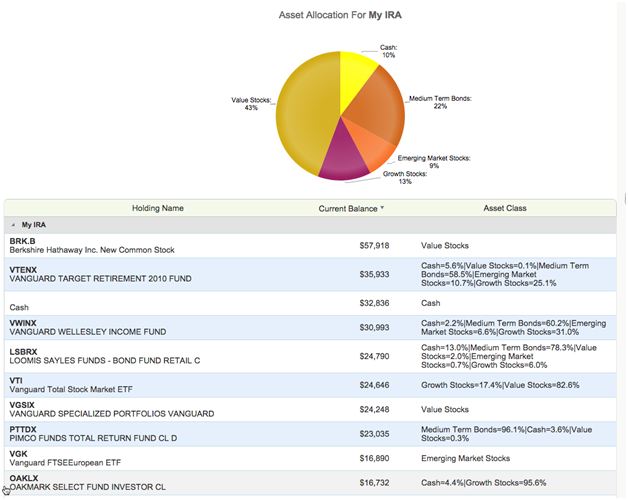
WealthTrace can also help with a lot of other data you might want to see on an aggregated basis, such as:
Balance History. As with asset allocation, you can manually keep track of your account balance history via individual account statements, or you can see historical balances via WealthTrace--all in one place.
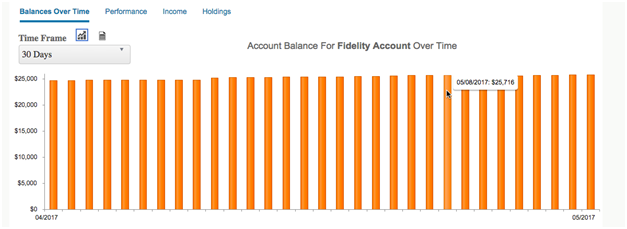
Performance History. How have your accounts been doing? We can show you performance data one account at a time or on an aggregated basis.
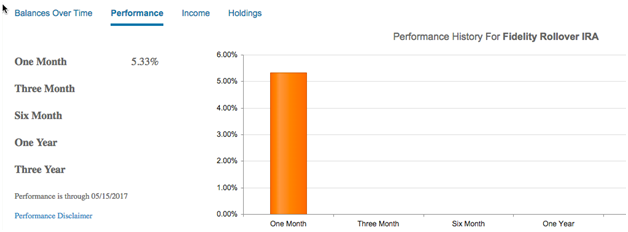
Expenses. This can a big deal, and it's not something everyone offers. What you are paying in fees on your investments (mutual funds and exchange-traded funds) can have a huge effect on your returns over time--and you may not even know it.
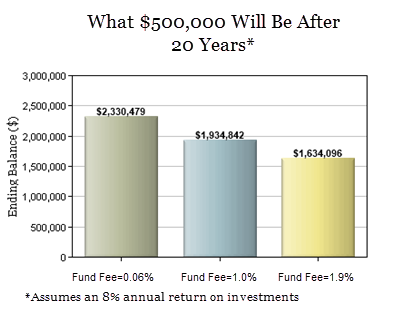
Sometimes it's helpful to just see the fees in black in white in front of you--something you generally won't see without poring through one prospectus at a time.

WealthTrace will spell those fees out for you, investment by investment. And we can offer some lower-cost alternatives too. Click here to learn more.
The Future
You can get much of what you have read about here so far using various sites and services. And you can get much of it for free.
But not this next part.
As far as we know, WealthTrace is the only service that will let you take all of this great data--the account aggregation, the asset classes updating automatically, the calculating of projected returns based on those asset classes--and give you a Monte Carlo analysis taking those numbers (not to mention projected cash flows, tax rates, and much else) into account.
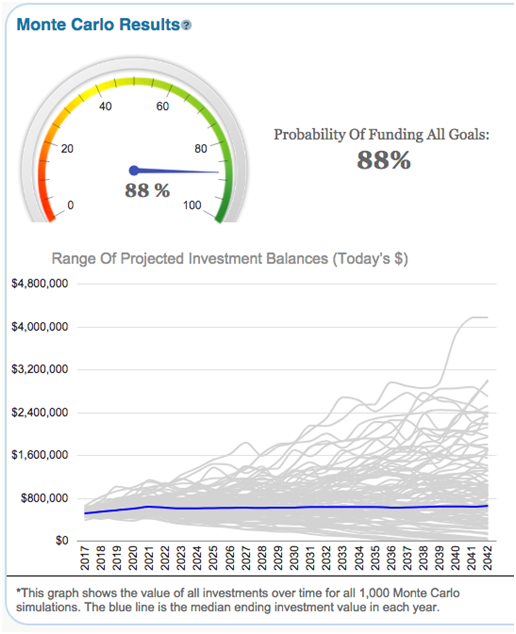
Running Scenarios
Then there are powerful what-if scenarios you can run. What happens if I save more, retire earlier, or do a
Roth conversion? What if social security payments are cut, what if
inflation is higher? You can run all of these scenario in WealthTrace plus many others.
As long as you're putting in the time aggregating your accounts, doesn't it make sense to use the data to look forward as well as backward?
WealthTrace is the whole package: Financial planning software that is as powerful as an advisor would require, but easy enough for individual investors to use. Click here to sign up for a trial subscription.